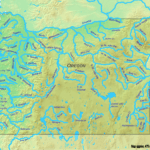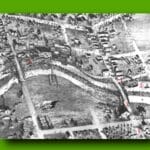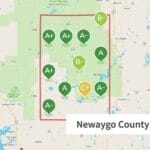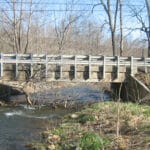Klamath Falls, Oregon, nestled amidst the stunning scenery of Southern Oregon, offers a unique blend of small-town charm and access to breathtaking natural beauty. This article provides a comprehensive, data-driven analysis of Klamath Falls’ population, exploring its size, demographics, growth trends, and economic context. Understanding these factors is crucial for anyone considering relocating to, investing in, or simply learning more about this distinctive community.
Population Size and Growth: A Close Look at the Numbers
Klamath Falls has experienced modest population growth in recent years. According to the 2020 U.S. Census, the population stood at 21,813. Subsequent estimates suggest a slight dip to approximately 21,806 in 2022, according to Census Reporter/ACS 5-year data. Projections for 2024 anticipate a small rebound to approximately 21,911 (World Population Review). These varying figures highlight the importance of considering multiple data sources and their respective methodologies. Discrepancies can arise due to different data collection methods and timeframes. For example, Data USA presents conflicting figures for the city proper (21,806) and the broader area (69,506), requiring further investigation to ensure accuracy. This modest growth rate of roughly 0.11% annually between 2020 and 2024, while small, suggests a degree of stability and potential for future growth. This prompts questions regarding the factors influencing these trends. Is it driven by natural increase (births minus deaths), migration to the area, or a combination of both?
Understanding the Demographics: Who Calls Klamath Falls Home?
Analyzing Klamath Falls’ population requires going beyond raw numbers and considering the demographic makeup of the community. The median age is approximately 35.1 years (2022 estimate), suggesting a mix of established families and younger individuals. The median household income is around $46,695 (2022 estimate), which is likely lower than some other areas of Oregon but may be offset by the lower cost of living. Further analysis of income trends over time would provide a more complete picture of economic well-being in the city.
Racially, Klamath Falls is predominantly White, comprising roughly 78% of the population. The Hispanic/Latinx community represents the second largest group at approximately 12.4%. However, complete data on other racial groups, including Black/African American, Asian, Native American, and Pacific Islander residents, is needed to fully understand the city’s diversity. Gaining a clearer understanding of the racial and ethnic composition is vital for creating a more inclusive and representative picture of Klamath Falls. Furthermore, examining the geographic distribution of racial groups within the city could reveal patterns of residential segregation or integration.
Klamath Falls in Context: Geography, Economy, and Lifestyle
Klamath Falls serves as the county seat of Klamath County, Oregon, situated on the southeastern shore of Upper Klamath Lake. This location influences the city’s character and economy. The lake provides not only stunning views but also opportunities for recreation, potentially attracting residents who value outdoor activities. Nestled in the heart of Wyoming, discover the majestic heights of Laramie WY elevation, a city where the sky seems just a little bit closer. For a different mountain experience, explore the vibrant city of Missoula Montana elevation and its surrounding peaks.
Historically, the economy of Klamath Falls was heavily reliant on the timber industry. However, the city is currently working to diversify its economy, attracting new industries and potentially contributing to the recent population growth. Understanding the types of industries being developed and their potential for sustainable growth is essential for evaluating the long-term economic outlook.
The ongoing water issues in the Klamath Basin are a significant factor to consider when discussing the region. While the natural beauty of the area is undoubtedly appealing, water scarcity poses challenges for both residents and the local economy. Further research on how these water issues are being addressed and their potential impact on future population trends is crucial.
Is Klamath Falls a Good Place to Live? Weighing the Pros and Cons
Determining whether Klamath Falls is a “nice” place to live is subjective and depends on individual priorities. The city offers several advantages, including a lower cost of living, particularly in housing, as well as access to abundant outdoor recreational activities. Short commute times, averaging around 14 minutes, are another plus.
However, potential drawbacks include a smaller and less diverse job market compared to larger cities, fewer restaurant options, and a limited selection of big-city amenities. The impact of the ongoing water issues in the Klamath Basin is another important consideration.
Klamath Falls: A City in Transition
Klamath Falls is a city in transition, striving to balance its historical roots with a vision for the future. The modest population growth suggests a degree of stability and potential. However, the city faces challenges, including economic diversification and water resource management. By understanding the complex interplay of demographics, economics, and environmental factors, we can gain a more complete picture of Klamath Falls and its future trajectory. Further research, including ongoing studies on local trends and community input, will undoubtedly enrich our understanding of this dynamic Oregon community.
- Discover Long Black Pepper: Flavor & Health Benefits - April 25, 2025
- Shocking Twists: The Grownup Review: Unreliable Narration - April 25, 2025
- A Quiet Place Book vs Movie: A Deep Dive - April 25, 2025
















